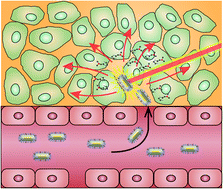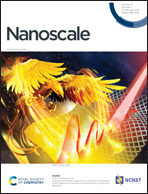GRPr-mediated photothermal and thermodynamic dual-therapy for prostate cancer with synergistic anti-apoptosis mechanism†
Abstract
Conventional prostate cancer treatment strategies, including chemotherapy and radiotherapy, cannot effectively eradicate prostate cancer, especially castration resistance prostate cancer. Herein, we developed a novel nanotherapy platform that consists of synergic photothermal and photodynamic therapy via the unique properties of photothermal conversion by gold nanorods and free radicals generation by encapsulated initiators (AIPH). Mesoporous silica was employed as a coating material, and the bombesin peptide was conjugated onto the mesoporous silica coating layer as the targeting moiety to prostate cancer via its overexpressed gastrin-releasing peptide receptors. An in vitro study with the castration resistance prostate cancer cell exhibited a significant photothermal therapeutic effect as well as enhanced thermodynamic therapy via generating free radicals. P-p38 and p-JNK proteins, as key proteins involved in the cells’ stress responses, were found to be upregulated by the synergetic treatment. The in vivo study demonstrated that a significant eradication of prostate tumour could be achieved by the nanoparticle therapeutic platform with a good biocompatibility profile. This work pioneers a novel approach for high-efficient castration resistance prostate cancer treatment by combining photothermal, thermodynamic, and site-specific drug delivery directed by an integrated nanoparticle system.



 Please wait while we load your content...
Please wait while we load your content...